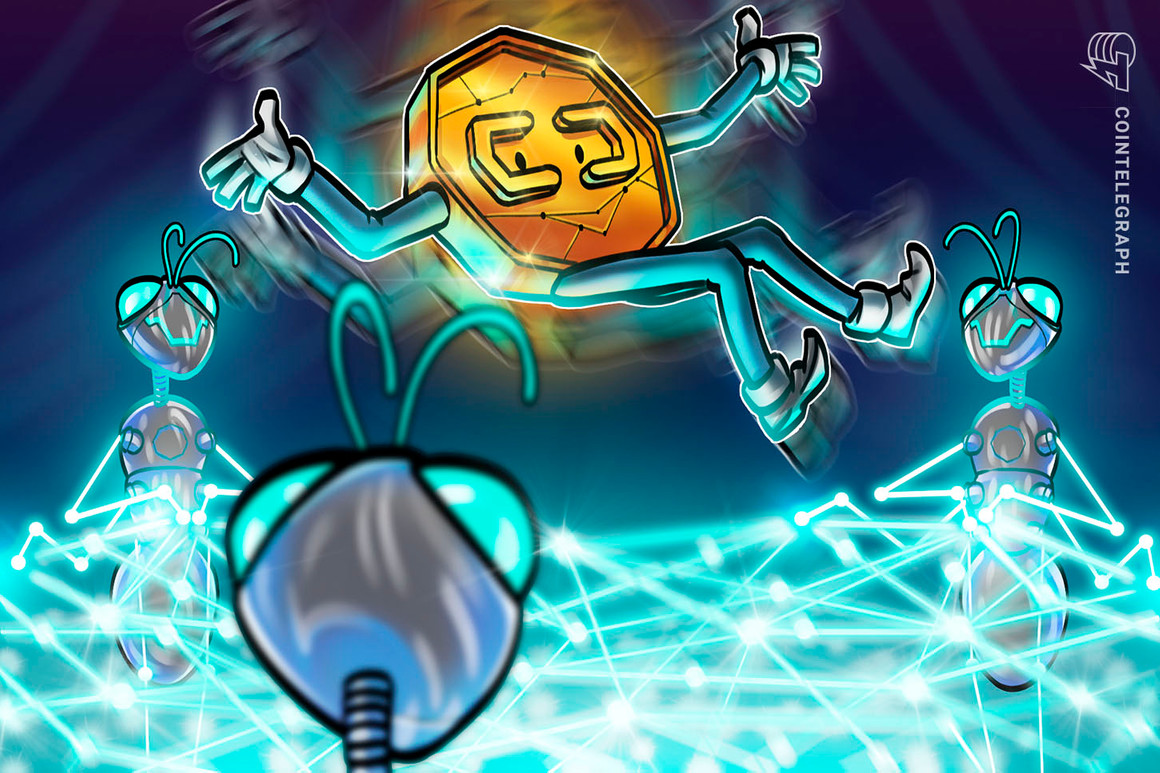
To function effectively, society has long depended on people having faith in their institutions. Thanks to the COVID-19 pandemic and wide-ranging failures of leadership, that faith has been tested like never before.
Nowhere is the decline in trust more evident than in the financial services sector. In its 2021 Trust Barometer, Edelman found that only 53% of American respondents said they trusted those in the U.S. to “do what is right” — down 5% from its 2020 survey. You can see this in the battle between Main Street and Wall Street, which played out in January’s GameStop rally. More than just another “short squeeze,” the rally highlighted the fact that many younger investors simply don’t believe in financial institutions.
Related: r/Wallstreetbets vs. Wall Street: A prelude to DeFi bursting onto the scene?
Trending away from institutional authority is also evident in the explosive growth of decentralized finance, or DeFi. By using decentralized applications on the blockchain, DeFi allows individuals to lend or borrow funds, trade coins and earn interest on savings. Their transactions are governed by smart contracts, embedded in the software; no bank, brokerage or exchange is required.
With a digital-first generation, DeFi will become the default
To illustrate how fast DeFi has taken off, examine the total value locked, or TVL, being poured into the DeFi sector. TVL is the best way of charting the success of DeFi, as smart contracts usually require a counterparty to post collateral for any transaction. As of mid-March, almost $59 billion was locked into DeFi. A year earlier, that figure stood at around $500 million.
The overall crypto market — driven by Bitcoin (BTC) — is now worth well over $1 trillion, so there’s a long way to go before DeFi becomes headline news. Though remember: It took Bitcoin nearly 10 years before institutional investors really started to buy in — and it seems that it will take half that time for DeFi to achieve similar penetration.
Related: Why institutions suddenly give a damn about Bitcoin
Why? Because younger investors — like the GameStop traders — understand the concept of digital scarcity, embracing the fact that non-physical assets have value. That’s why they’re buying up nonfungible tokens as a way to trade digital properties. The best-known example of the NFT phenomenon was the Christie’s auction in March of a digital collage by artist Beeple — purchased for almost $70 million using cryptocurrency.
Related: Actionists reinventing art: As it ever was, so shall it ever be (even in crypto)
What has been a trickle of crypto activity promises to become a torrent, once the bulk of Baby Boomers retire. The epochal event, now underway, represents one of the greatest transfers of wealth ever. According to “Big Four” audit firm PwC, an estimated $59 trillion in wealth will move from retiring Boomers to their digital-native beneficiaries by 2061.
It is this new generation that will be looking for ways to invest their inheritance — and choosing the systems and platforms in which to place their trust. Given the choice, Millennials and Gen Zs will always choose the investment option that’s cheaper, more accessible and available 24/7.
Related: Crypto could save millennials from the economy that failed them
As DeFi takes off, expect legacy institutions to fight back
Of course, banks being banks, you can expect to see them — along with other legacy institutions — fighting hard to defend their turf. They know that to remain competitive, they’ll need to increase service hours, decrease settlement times and boost user functionality.
Already they’re starting to integrate smart contracts and other DeFi technologies into existing platforms — both to increase efficacy and to keep up with market demand for more transparency and customer privacy. In a February white paper, released by the Depository Trust & Clearing Corporation, the DTCC proposed shortening the settlement cycle for U.S. equities from two business days to one.
Even then, the planned implementation of the DTCC plan could take two years — and still lag behind the instantaneousness of crypto. In a world that’s moving rapidly toward a 24/7 model, security issuers that stick to industry laggards will soon be left behind.
The path ahead is promising — but not without its bumps
While the technology for DeFi is advancing quickly, it will take time for the capabilities to get where they need to be for broad-scale adoption. The network fees required to trade on decentralized trading exchanges such as Uniswap are still high (though that’s expected to come down over time).
There’s no denying the potential of being able to buy or trade digital assets 24 hours a day, with immediate delivery, or to borrow on a peer-to-peer level — and dictate your own terms.
There are still some 1.7 billion people who are considered “unbanked” — and DeFi holds the promise of offering any individual with an internet connection and mobile phone a full array of banking services.
This article does not contain investment advice or recommendations. Every investment and trading move involves risk, and readers should conduct their own research when making a decision.
The views, thoughts and opinions expressed here are the author’s alone and do not necessarily reflect or represent the views and opinions of Cointelegraph.
Mitchell Demeter is a serial entrepreneur who launched the world’s first Bitcoin ATM in Vancouver, Canada back in 2013. Mitchell now serves as president of Netcoins, a trading platform that is aimed at making it easier to buy, sell and understand cryptocurrency. He has been featured in publications such as Wired, Time, HuffPost and Forbes and contributes regularly to Fast Company and Entrepreneur.




